As a collector of ikat saris, I have a defining memory of the weave. An exquisite cotton ikat sari woven by Pitabas Meher, whose father Mohan Meher received the National Award for the design. In shades of deep red and indigo, it was inspired by a board game and replicated the motifs of the dice with script and numbers. I wore it to receive the Rajat Kamal from President Abdul Kalam in 2003 for producing the documentary Meeting Manjit.
Later, I had the occasion to acquire more beautiful weaves from Meher, before discovering newer designers such as Gunjan Jain, and institutions like Meera Mehta and Pavithra Muddaya who have been experimenting with ikat. So, it is with keen interest that I have been following the progress of Patta-Bandha: The Art of Indian Ikat. The third in a trio of exhibitions centred around the repertoire of Indian textiles, it is curated by Mayank Mansingh Kaul, in collaboration with the National Crafts Museum and Hastakala Academy and Devi Art Foundation.
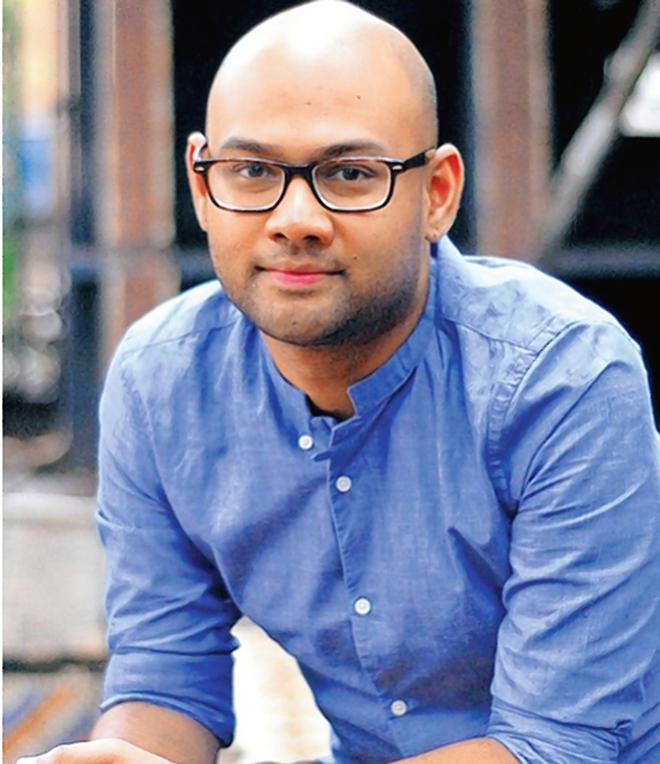
On a cold winter morning, Kaul and collector Lekha Poddar walk a small group of us through Patta-Bandha (patta means thread and bandha in Sanskrit is to tie or bind) at the National Crafts Museum. We discover that the exhibition is not just a visually immersive experience, but a deeply researched study of ikat’s long tradition, contextualised through its geographical spread. “Ikat is a word of Malay-Indonesian origin that is now used to describe all kinds of tie and dye on yarn techniques around the world. The title of the exhibition is an attempt to give an identity to the genres of this tradition in India,” says Kaul. “Through the trio of exhibitions, we are also trying to create an introduction to prominent Indian weaving traditions for a lay person.”
He explains that the initiative had been in the works for a while, which gave him the time to sift through vast archives to ensure that the chosen pieces were justly representational. While most of the 34 pieces on display were sourced from Odisha, Gujarat, Telangana and Andhra Pradesh — the regions famous for their ikat tradition — some are from the Deccan and Maharashtra too.
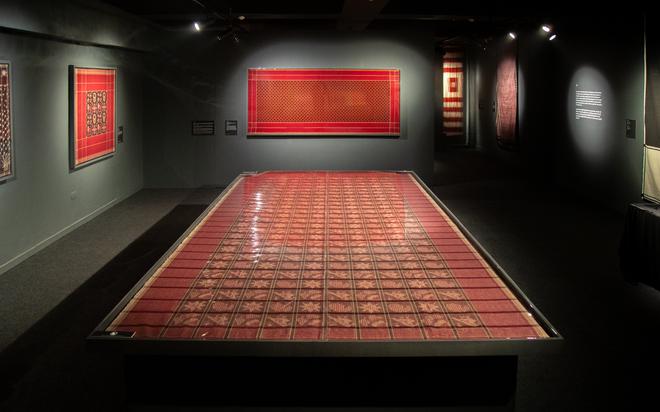
Complementing the archetypal manifestations of Indian ikat is a group of works by contemporary practitioners such as Sumakshi Singh, Akhila Krishnan and Bashobi Tewari. “Because of Devi Art Foundation’s larger mandate of contemporary art, we have tried to mix the historical with the contemporary, and show that many of the traditions are continuing,” adds Kaul. “They suggest new possibilities for the tie and dye technique of yarns intrinsic to ikat.”
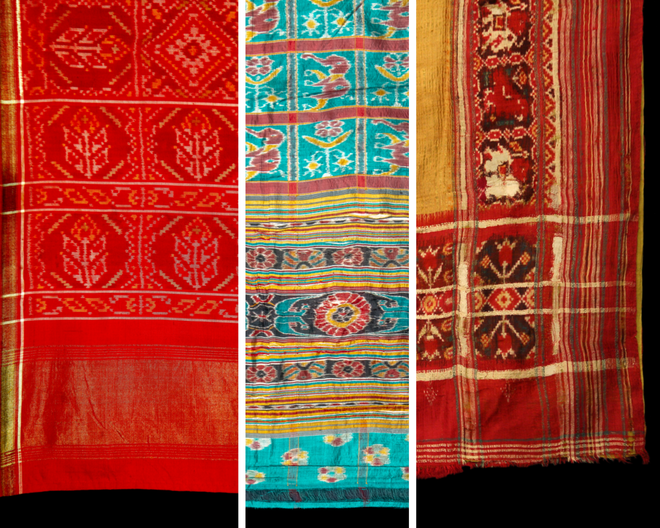
Single, double and compound
Scenographer Reha Sodhi’s sensitive lighting of the ikats on display, from the woven saris to ceremonial cloths, panels, calligraphic weaves, bed covers, rumals, and fragments, is dramatic. She manages to create a niche for each, be it a Telia Rumal (ikat handkerchief) or Krishnan’s hanging chandelier of threads.
Among the many exhibits, a few stand out. Like the Mulberry Zari Saree, dating back to the late 19th or early 20th century — intricately patterned in single ikat along the warp in the border and tie and dye in the aanchal — or the Molkalmuru Chukki Saree from Chitradurga district (1990s to 2000s), where weavers of Sokulasali, Pattasali and Padmasali communities weave an intricate pattern using contrasting colours between the border and the body.
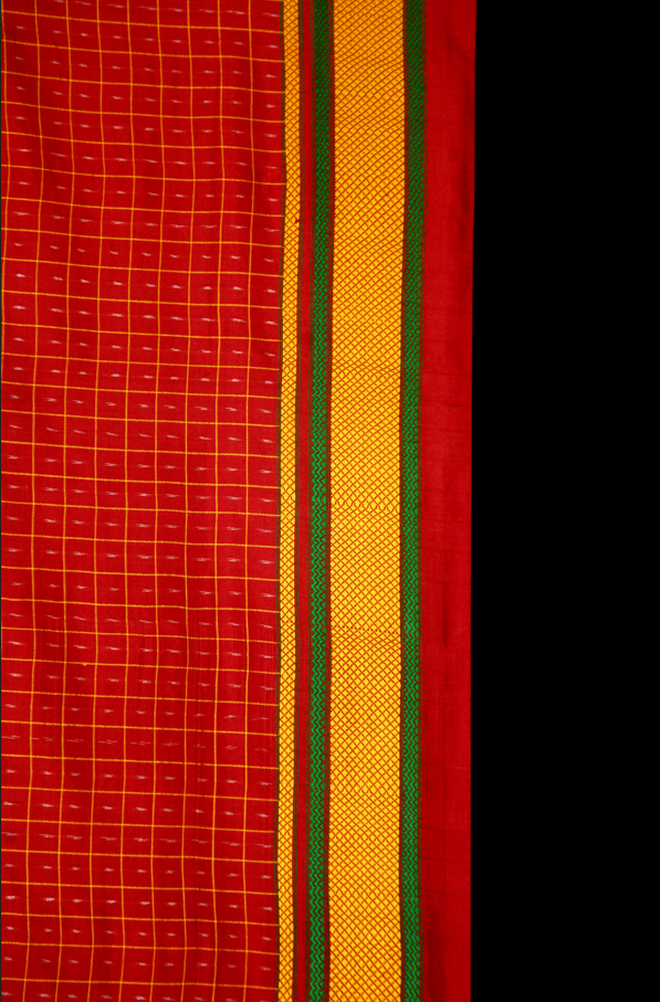
A compound ikat panel in the Odisha tradition created by Sudam Guin, with a fish motif, catches the eye. Highlighting the Twenty Point Programme, which was introduced by the Indian government in 1975, it has woven English letters that list agriculture, housing, taxation, employment, and so on. In another instance of the Odisha ikat sari, we find erotic love paeans inspired by Upendra Bhanj’s medieval poetry in white and yellow silk, with linear lines of fish and rosette motifs.
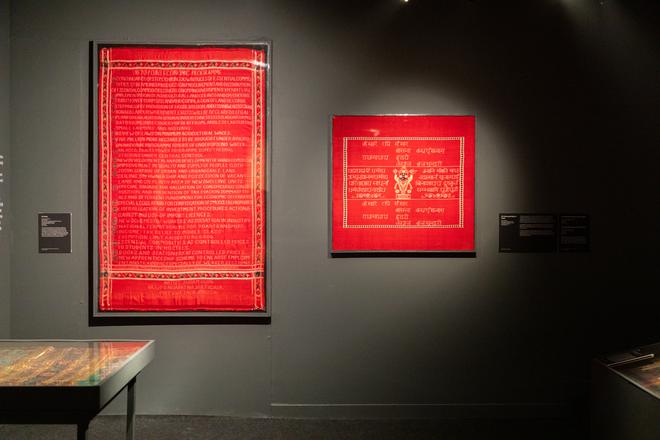
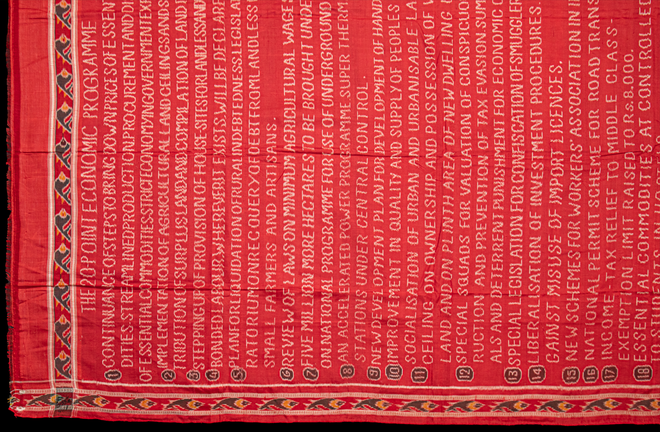
Contemporary study
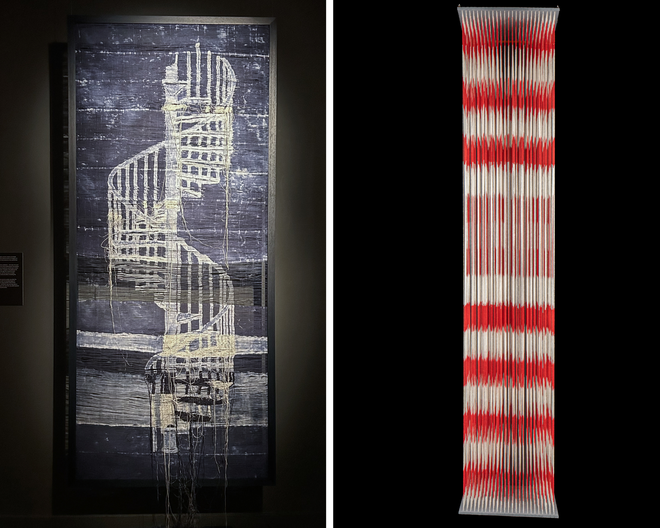
Each woven piece comes with its own narrative, such as the exquisite patola created by weaver Chotalal Salvi and designed by Rakesh Thakore (one half of fashion design label Abraham & Thakore), as part of the Vishwakarma series of exhibitions dating back to the 1980s and 1990s, where the triangular motifs placed along a horizontal band in the end panels make for a stunning effect. Or the patola with betel leaf motifs — to be used as a veil or a sari — that was the preferred garment of affluent Jain and Hindu women in central or northern Gujarat. From the collection of Devi Art is the beautiful patola called Vohra gaji bhat — as it was draped by the Vohra Muslims of Gujarat — with symmetrically repeated peepal leaves, stars and 12-petalled rosettes intricately woven to create a stunning textile.
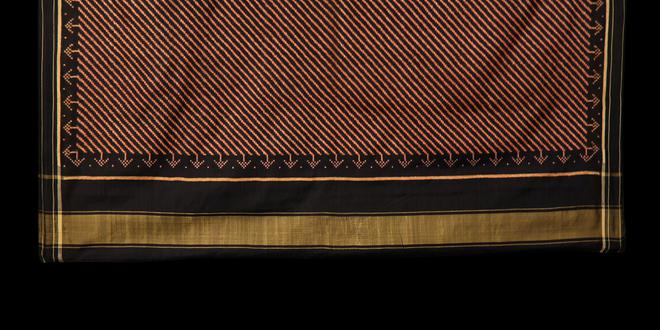
Unlike the earlier exhibitions from the trio, Fine Count and Vayan, dedicated to fine muslins and brocades respectively, the ikat exhibition becomes especially meaningful when you see that till date, this textile is worn by the affluent classes as much as the middle classes. A fact that is reflected in the elaborately- patterned ikats and Telia Rumal with its bright red, brown and black checks, to the priest’s chadar (shawl) with decorative devotional text.
The exhibition is on at the National Crafts Museum till March 11. On March 3, a one-day symposium will feature a guided walkthrough and presentations by renowned speakers, including Gunjan Jain and Savan Salvi.
The writer is a Gurgaon based-curator, author and collector.







